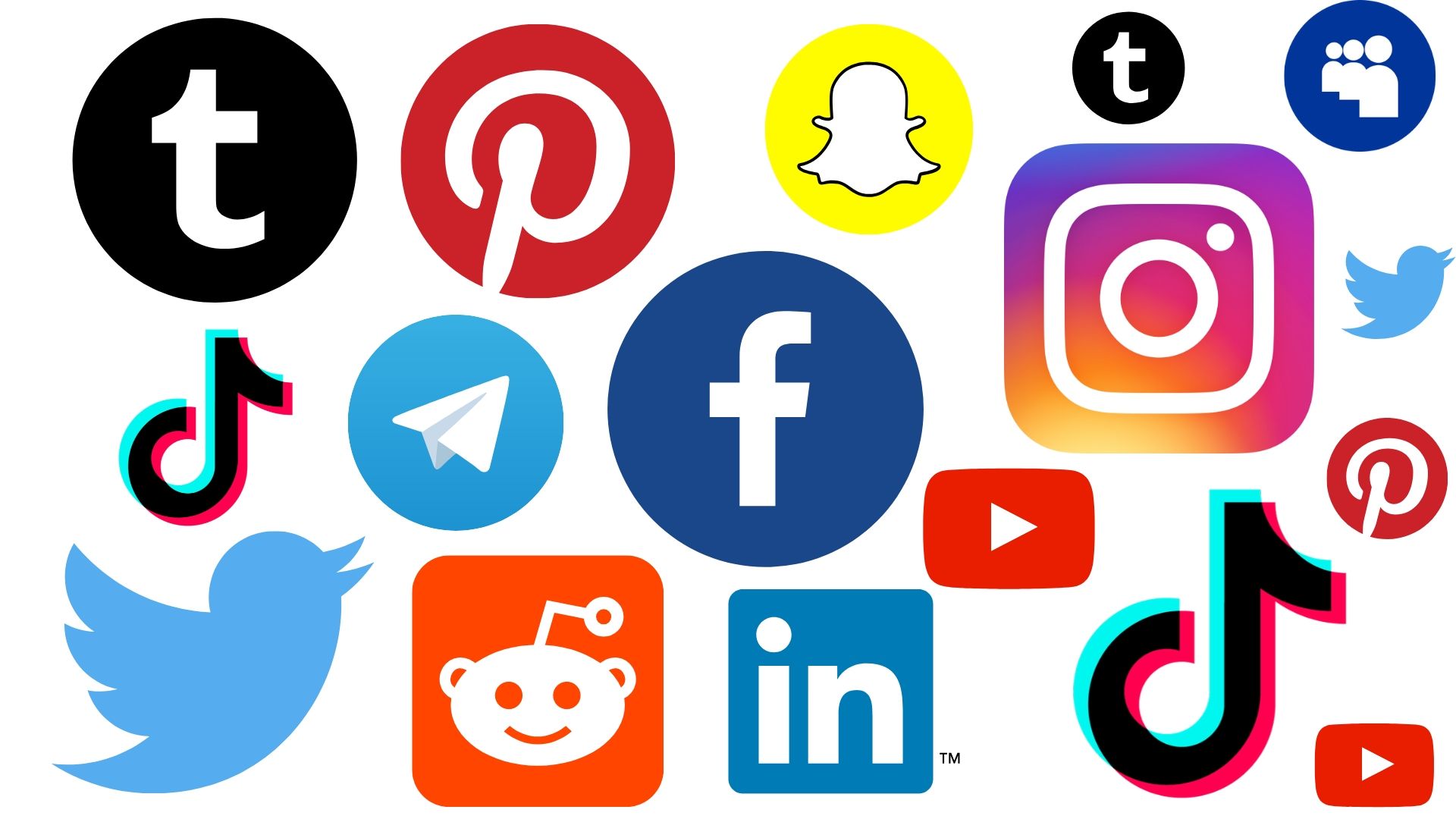Lesson 2
Creating customers
Techniques for converting prospects into customers.

2.1 Prospects & Potential Customers

Follow-up really starts when you meet new people at events, conferences, networking groups, or just casually through introductions. Potential customers are at the supermarket, your child’s sports game, standing in line behind you, or in the dentist’s waiting room. The key to turning that casual meeting into an active prospect is follow-up.
In Lesson 1 we touched on how follow-up is applied to new leads acquired through networking. However, as you no doubt already know, there are several ways to generate leads. In this lesson we discuss how to apply effective follow-up to any lead source and how to turn those leads into customers.
2.1.1 Online Presence
If you’re in business today, an online presence is a must.
An online presence begins with a website. Depending on your industry and your specific business needs, it can be a simple one-page information site or landing page, all the way up to a complex, multi-page, full-on encyclopedia of your business and what you have to offer. You decide what will work best for you or contact us and we’ll help you figure out how to get online and give your business a competitive edge.

Consumers today are turning to online sources to help them make their purchasing decisions. They research the products and services, and the businesses that provide them; they read the reviews and testimonials; they poll their networks for recommendations and referrals; they are well educated by the time they are ready to hit the ‘buy’ button. That’s why having an informative, easy-to-use website that is backed up by reviews and testimonials as well as an engaging social media presence is essential for directing customers to your goods and services.
2.1.2 Social Media
There are many social platforms to choose from today: LinkedIn, Facebook, Twitter, Instagram, Snapchat, YouTube, and Pinterest are just some of the mediums in a growing list of viable social networking sites.

Social Media Tips
Create an informative, engaging profile
Choose profile and cover images that accurately reflect your brand – a logo, product sample or a professional image of the business owner are good choices.
Complete your biography, using both the short and long business descriptions, with interesting content that piques the reader’s curiosity.
Fill in all available and applicable fields, especially the contact information.Add a ‘contact now’ button to Facebook and Instagram so people can call you as an easy next step.
Share, share, share
Start by sharing your page with friends and family or people in your company. Share links with your email contact list.
Follow, join, retweet, share and connect with other users and/or relevant groups. On sites with tags (like Twitter and Instagram), adding useful tags will help you get discovered.
Post consistently
Make sure to keep your content updated. A page or feed that hasn’t seen new content in weeks or months is worse than having no social media presence at all. It doesn’t have to be daily but once a week is an effective minimum.
If you have a blog or newsletter, link that to your social media. You can hire a social media manager to lighten the load here. Contact us and we’ll put you in touch with someone you can trust.
Offer incentives for sharing your posts
Most humans have a ‘what’s in it for me’ instinct, so once your immediate friends and family have liked and shared your page, it’s helpful to devise incentive-based offers to create a traffic boon. Offer goods such as discount vouchers, a free product, or entry into a competition * for sharing a post.
*Check with the platform’s ‘Terms of Use’ as restrictions may apply for competitions.
Respond to engagement
Your pages should be a welcoming environment where people can hang out, express their opinions, and feel included, so always acknowledge people who respond to your content. Tag people in comments, and like or reply to reviews and posts on your page; even the negative ones.
Remember that these people have followers too and every time you engage with them you are building your audience so be kind with your words and keep it light.
Use analytics
Most platforms now provide free analytics which you should take advantage of. Useful metrics to pay attention to include:– Number of reactions/shares/comments on a post– The days and times that users are most active– How many clicks a link receives– Demographics of your audience: age, sex, location, interests
With so many platforms to choose from, it can be overwhelming. The good news is, you don’t need to be on all of them! In fact, spreading your resources too thin is counterproductive. There’s nothing worse than Googling a business and finding an old, abandoned Twitter account sitting among half-baked hashtags and a default profile picture.
Pick the platform(s) that work best for you and your brand
In the beginning, choose one or two platforms, and start there. Do some research, and pick the ones where your target audience is present. The quality of your content reflects on your company, so don’t create profiles for the sake of it. Put your energy into developing and maintaining relevant platforms to avoid seeming like someone who isn’t committed to their business. If you’re looking for some assistance with this aspect of your online presence, contact us and we’ll help you figure it out.
Each connection, response, and follow-up you can make in your social channels solidifies your brand in a consumer’s mind.
2.1.3 Email Marketing
Email is a tried and true marketing tool that has proven it can evolve and adapt to new trends and consumer preferences.
A majority of people prefer email marketing over other channels because, by providing an email address, they have granted you explicit permission to contact them and they can end the connection at any time by clicking “unsubscribe”. This is perceived as a no-risk way of obtaining the information they are looking for from you, without having to make any personal commitments or sacrifices.
The email marketing process does come with some challenges however. First, you must ensure your messages make it to the prospect’s inbox. Next, you need to entice the recipient to actually open and read your message. Finally, they need to follow through with the actions necessary to complete the transaction. Here are some methods for overcoming these challenges:
Increase Deliverability
Keep your emails from ending up in the Spam or Junk folder.
Use double opt-in verification
When someone signs up for your email list, a confirmation email is sent that requires the subscriber to confirm their subscription.
This interaction signals the email provider that your message is accepted, not spam.
This also ensures that only real subscribers are added to your list.
Respond quickly
Today’s consumers have a short attention span and a desire for instant gratification.
If you take too long to respond to their opt-in or message, they may not remember who you are or that they subscribed to your email list, and decide to report your message as spam or mark it as junk.
Don't use false or misleading header information
The FTC’s CAN-SPAM Act mandates that your “From,” “To,” “Reply-To,” and routing information – including the originating domain name and email address – must be accurate and identify the person or business who initiated the message.
Don't use deceptive subject lines
Another FTC mandate: The subject line must accurately reflect the content of the message and clearly indicate if the message is an advertisement.
Include your physical address
This is one not everyone is aware of — You must include your valid, physical address.
This can be your current street address, a post office box that has been registered with the U.S. Postal Service, or a private mailbox registered with a commercial mail receiving agency established under Postal Service regulation.
Include an "Unsubscribe" option
At the bottom of your emails, include an unsubscribe link or a similar opt-out feature.
When spam filters scan for mandated content, this is a must-have to avoid an ‘undeliverable’ redirect.
Increase interaction
In order for them to be effective, messages must be read and readers must interact.
Segmentation
Instead of sending a generic email to everyone on your list, segment your subscribers into focused groups so that you can target your message to that specific audience.
By narrowing your focus and segmenting your list using factors such as age, location, job title, or interests, you are able to craft more relevant messages which will produce more reader interactions and higher conversion rates.
Compelling subject lines
Keep your subject lines short (6-10 words). Use words that generate curiosity and interest. Challenge the recipient to explore further. Research shows that terms like ‘secrets’, ‘little-known’ and ‘find out’ are more compelling than ‘information/info’, ‘learn’ or ‘offer’.
Personalization
Whenever possible, use the recipient’s name in your subject line or preview text. Even though you are sending the message to a group of subscribers, write as if you’re speaking to an individual person. With a personal subject line and a personalized message, you increase the likelihood of drawing in and converting the reader.
Recognizable sender
If the recipient sees a person’s name or a brand/company they recognize as the sender of the message, especially if they’ve had favorable interactions with that sender previously, they are more likely to engage.
Timing
Research shows that if your message is delivered at the right time, it is more likely to be read and granted attention. Do some research on your list’s recipients to find out when they are most apt to be checking their email and run some comparison tests wherein you change only the time of day or day of the week that you send your message, to see which one elicits a higher response rate.
Optimize for mobile devices
Many people check their email using a mobile device. If your email does not display correctly on mobile it will likely be deleted within seconds.
Short subject lines and brief message content is better than rambling subjects and long, wordy paragraphs.

Increase Conversations
Complete the email marketing process by converting prospects to customers.
You’ve collected your leads and segmented your lists. You’ve done your research on your subscribers, created clever subject lines and personalized preview text, now it’s time to craft the message that will compel your readers to become customers. Some simple strategies for composing an effective email message include:
Write to a friend
Everyone prefers to read emails from friends than a marketing or business email so keep your content friendly. Write as though you’re talking to a friend. Close with a P.S. that lets them know you are there for them if they need anything.
Write easy to scan content
Most consumers will scan or skim a message for less than 15 seconds so it’s important to organize your content for quick reading. Use headings and bulleted lists to divide content into sections that are easy to follow and understand. Add links to your text for the user to click through to a page on your website if they want more information.
One clear message
Your email should have only one actionable message. It’s recommended to have more than one way to act, such as an image with a clickable link, a text link in the title or body of the message and a call-to-action button at the bottom, but they should all promote the same product or service. Too many choices or options can confuse the reader and cause them to abandon action altogether.
Clear call-to-action
Have an impeccably clear call-to-action. Tell your readers exactly what you expect them to do next. Instead of focusing on the features of your product or service, tell them about the benefits and why it’s in their best interest to take action.
Offer incentives
Add value to your offer through discounts or free add-ons that are only available through this exclusive offer but don’t make it sound like an infomercial with phrases like “buy now and we’ll give you…”. Tell your readers that you value them and you want them to experience the benefits that your products can provide.
Analyze and Adjust
Keep your campaigns fresh and productive.
An email marketing campaign is only as good as you make it. Without proper monitoring and maintenance, you have no way to control its effectiveness. Track these aspects of your campaign and make adjustments regularly to keep your emails working to enhance your business.
Subsriber list
Keep track of your new subscribers and make sure they’re getting the attention they deserve. Update your list regularly by removing the unsubscribes/spam complaints, and addresses of bounced or undelivered messages. The goal is to have the additions outnumber the deletions so if that is not the case, you need to beef up your attraction game.
Open rate
Know how many times your emails are actually opened, and when they are opened, so you can run A/B tests using different content or delivery methods to maximize the interest and get your messages read.
Conversation rate
The conversion or click-through rate is vital to your email marketing plan. Often, getting your subscribers to click on a link inside your email is the main goal of your campaign, so this is an important metric to measure. Some factors that may need to be adjusted to accomplish this goal are the text on the link, the location of the link in the body of your email, and the number of times you included the link.
Forward/share rate
Your forward or share rate is the percentage of your email recipients who forwarded your email to a friend or shared your email by clicking on a share button inside your email.
This is an important metric to measure and to try to increase. If your existing leads are forwarding your emails, that means they are actually becoming ambassadors of your brand and generating new leads for you.
Establishing and maintaining a solid email marketing campaign can positively affect your communications with your prospects and it’s a key component for converting those prospects to customers.
2.1.4 Customer Relationship Management (CRM) Systems
Your lead conversions rely on quality processes and the proper use of tools in documenting, segmenting and interacting with your leads. CRM databases compile relevant information about customers from different channels including email, social media, websites, live chats, blogs, etc. and have been designed to perform your marketing strategies on multiple channels, in a repetitive order. We’ve done the research on a variety of CRM systems (see results here), or contact us for help with choosing the one that is right for your business.
The Shuffle App offers a very useful CRM package that will store unlimited contacts, send out scheduled digital business cards (more like mini-websites), track interaction and notify you whenever someone is viewing your card! That is very valuable information for making timely follow-up connections using any of the above channels. Imagine how that will affect your conversion rates!
2.1.5 Multi-Channel Marketing
Most businesses today use multi-channel marketing. This is where market research is key. Knowing your target market is one thing; another is knowing where they are and how they can be reached. Once this is established, the best practice is to continue your connection using that channel. If your prospects prefer emails, send them emails. If your prospects prefer calls, start calling. If your prospects prefer reaching out on social media, start connecting and posting your relevant content to attract and pull them in. The important thing to remember is that it’s all on the table — phone, text, email, social media, blogs, newsletters, use whatever works. The more touch points you use, the better chance you have of staying top of mind. Don’t forget about the channels available with the Shuffle App and SendOutCards these tools for success offer your business a unique and creative way to connect with your potential customers that will help you stand out from the crowd and separate your business from the marketing clutter.
A product or service is considered properly marketed when there is constant interaction from consumers who are contributing to brand awareness.
2.2 Follow-up
2.2.1 Immediate Response
It doesn’t matter if your new prospect is responding to your email, opting in on your landing page or requesting information from a blog post, contact form, or on social media, the time it takes you to respond to them can make all the difference in that person’s opinion of your business. Studies show that an immediate response (within seconds) to an online interaction will increase your odds of retaining that prospect’s interest by as much as 70%. Providing a quick follow-up to the questions and concerns of prospects and clients is an essential building block of long-term relationships. It shows them you care about them and helps you earn their trust and respect.
2.2.2 Sell them on the ‘why’
You’re continuously striving in business to move people first to desire and then to buy your product or service, again and again. For most people, the missing link in this process is to provide your buyers with a complete understanding of the reasons why you do what you do, why you sell what you sell, why your product or service is better than others, why they should act, and why they’ll be disadvantaged if they don’t. The more you help your buyers to understand the tangible, compelling reasons why they should take action, the more powerful your positioning, the more people will understand the value and benefits of what you have to offer, the more they will trust, and the more comfortable they will feel with what you are offering.
2.2.3 Track Everything
If you really want to understand the effectiveness of your conversion process, you have to track everything — when follow-ups were attempted, when contacts were made, how the prospects responded, etc. Your Shuffle Cards include tracking and stats, so you know exactly who is looking at your card and what they are clicking on and a CRM will allow you to track emails so you know exactly when your email is viewed by the prospect and whether or not they clicked through. While you don’t want to become “big brother” to potential customers, monitoring this information allows you to follow-up at the most opportune time.

2.2.4 Ask questions
To convert successfully you must first get to the essence of your prospect’s problem or need.
You must understand your customer’s concerns, desires, fears, and limits. You cannot prescribe a solution until you diagnose their need.
When you ask questions, you accomplish 3 things. First, you express an interest in them and/or their business. Second, you increase the probability of a response or engagement with them, and last, but not least, you open a dialogue that will provide insight into what that prospective customer is looking for and how you can offer value to them in your next follow-up. In your initial follow-up the question can be as simple as how they prefer to be contacted. For a B2B prospect it can go something like this, “I’m interested in learning more about [the prospect’s products or services]. What’s the best way to get in touch with you?” Avoid making this contact about you and your business. Remember, everyone is looking for customers. Showing interest in them and their business is a sure way of getting the lines of communication open.
Your initial follow-up will get your relationship off to a good start. But, of course, building the credibility and trust needed for someone to become a customer takes time and multiple contacts. That’s where ongoing follow-up comes in.
2.2.5 Consistent follow-up


